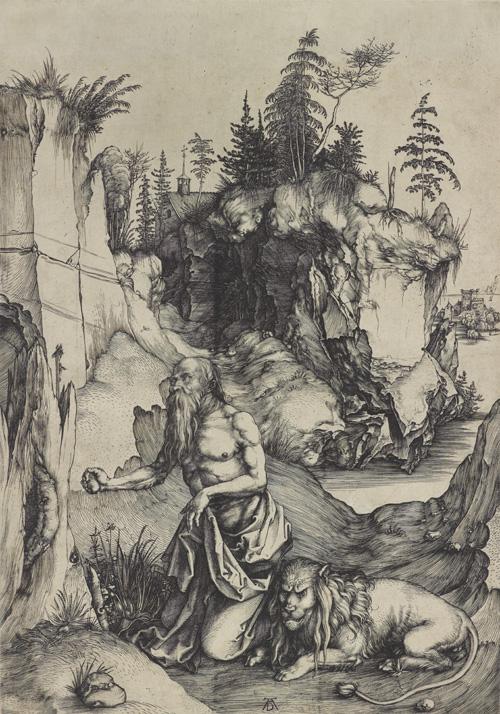Dates:
Location:
Becker Gallery, Focus Gallery
This exhibition celebrates the contributions of private art collectors to Bowdoin since the bequest of James Bowdoin III in 1811. Their many gifts — a few of which have been selected — extend the legacy of James Bowdoin III, expand visual and cultural horizons, and enrich the liberal arts curriculum. Artists featured include James McNeill Whistler, Winslow Homer, Henri Matisse, and Kathe Kollwitz. The show is curated by students in Art History 261: Private Treasures; Public Gifts.
Selected Works

Albrecht Durer , St. Jerome in Penitence., ca. 1496-1497, Engraving on cream laid paper, Bowdoin College Museum of Art, Brunswick, Maine, Gift of Charles Pendexter, 2009.16.274 12 3/4 in. x 8 15/16 in. (32.39 cm x 22.7 cm)
About
This exhibition celebrates the contributions of private art collectors to Bowdoin since the bequest of James Bowdoin III in 1811. Their many gifts — a few of which have been selected — extend the legacy of James Bowdoin III, expand visual and cultural horizons, and enrich the liberal arts curriculum. Artists featured include James McNeill Whistler, Winslow Homer, Henri Matisse, and Kathe Kollwitz. The show is curated by students in Art History 261: Private Treasures; Public Gifts.
When James Bowdoin III bequeathed his art collection to the College he had endowed in his father's name, he initiated a tradition of philanthropy that continues to the present day. Last semester, Associate Professor Linda Docherty's art history seminar studied the history of art collecting in America and the purposes underlying the transfer of private treasures to the public sphere. As part of this process, students researched gifts of art to Bowdoin and how they have contributed to the College's educational mission for two centuries. This exhibition presents the fruits of their exploration and honors the insight of donors who have shaped and enriched the Bowdoin College Museum of Art.
The motives for art collecting are as numerous as they are complex. For many individuals, a collection serves as a form of self-expression that manifests concretely who they are—or aspire to be. As a symbol of status art can confer social power, but it may alternatively provide a therapeutic refuge from worldly concerns. Some collectors relish art for its educational value, while others find spiritual meaning or personal consolation in its aesthetic qualities. Collecting may also be inspired by altruism: the desire to help a struggling artist or save an object from destruction.
By acquiring art and giving it away, private collectors seek to enrich the public. Historically, they have conceived their activities as a means of inculcating virtue, elevating culture, and fostering national pride. More recently, gifts of art have been intended to challenge the status quo, engage social issues, and stimulate new ways of thinking. American collector/donors particularly have viewed art as an instrument of democratic education. Their philanthropy bespeaks recognition of the limits of an individual life and a desire to leave a meaningful legacy.
A college art museum such as Bowdon's is uniquely able to fulfill the educational promise of gifts of art. This context invites close, critical, and repeated study by young people at a pivotal point in their intellectual development. Supported by a multidisciplinary community of learning, students are well positioned to discover heretofore hidden aspects of original objects. The reinterpretation of gifts of art by succeeding generations ensures them lasting life.
When James Bowdoin III bequeathed his art collection to the College he had endowed in his father's name, he initiated a tradition of philanthropy that continues to the present day. Last semester, Associate Professor Linda Docherty's art history seminar studied the history of art collecting in America and the purposes underlying the transfer of private treasures to the public sphere. As part of this process, students researched gifts of art to Bowdoin and how they have contributed to the College's educational mission for two centuries. This exhibition presents the fruits of their exploration and honors the insight of donors who have shaped and enriched the Bowdoin College Museum of Art.
The motives for art collecting are as numerous as they are complex. For many individuals, a collection serves as a form of self-expression that manifests concretely who they are—or aspire to be. As a symbol of status art can confer social power, but it may alternatively provide a therapeutic refuge from worldly concerns. Some collectors relish art for its educational value, while others find spiritual meaning or personal consolation in its aesthetic qualities. Collecting may also be inspired by altruism: the desire to help a struggling artist or save an object from destruction.
By acquiring art and giving it away, private collectors seek to enrich the public. Historically, they have conceived their activities as a means of inculcating virtue, elevating culture, and fostering national pride. More recently, gifts of art have been intended to challenge the status quo, engage social issues, and stimulate new ways of thinking. American collector/donors particularly have viewed art as an instrument of democratic education. Their philanthropy bespeaks recognition of the limits of an individual life and a desire to leave a meaningful legacy.
A college art museum such as Bowdon's is uniquely able to fulfill the educational promise of gifts of art. This context invites close, critical, and repeated study by young people at a pivotal point in their intellectual development. Supported by a multidisciplinary community of learning, students are well positioned to discover heretofore hidden aspects of original objects. The reinterpretation of gifts of art by succeeding generations ensures them lasting life.

